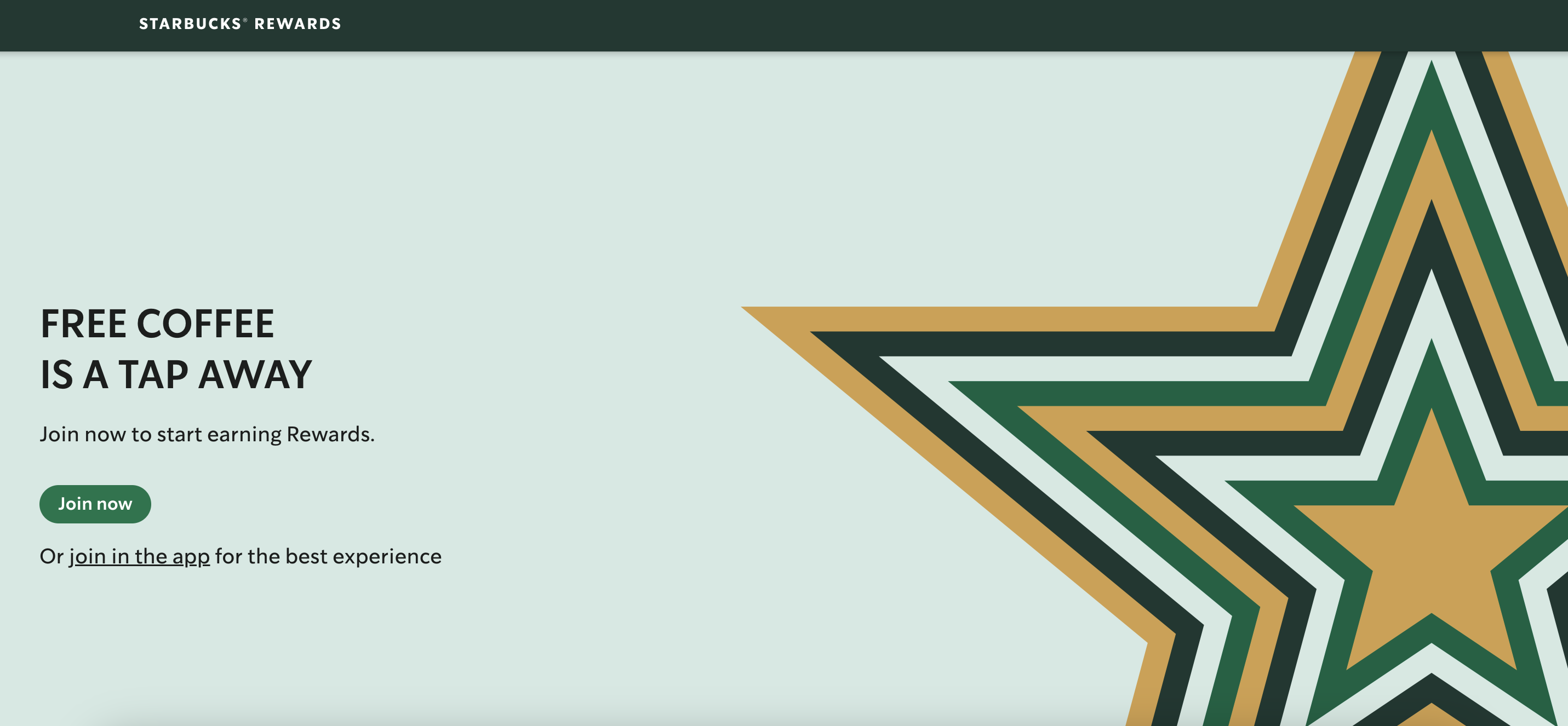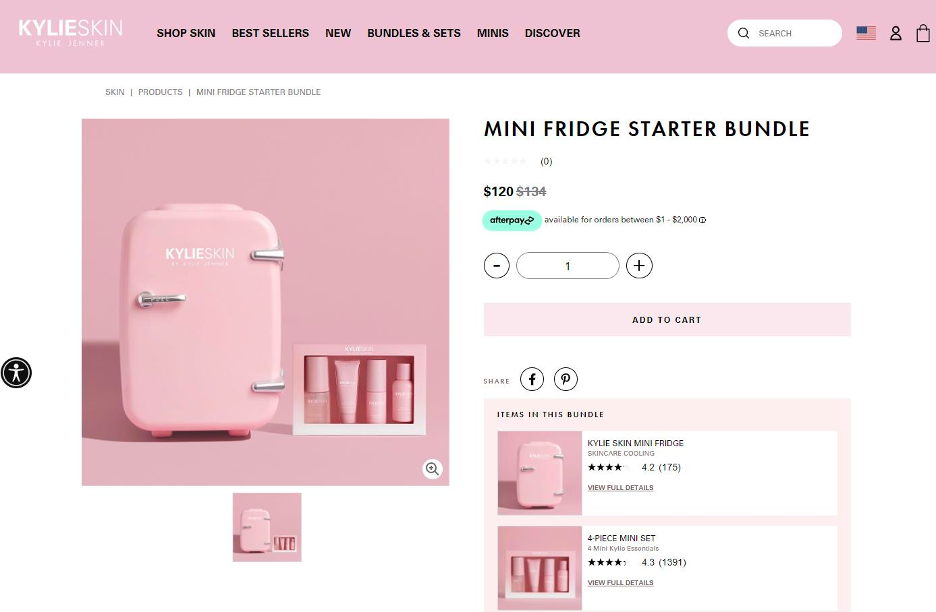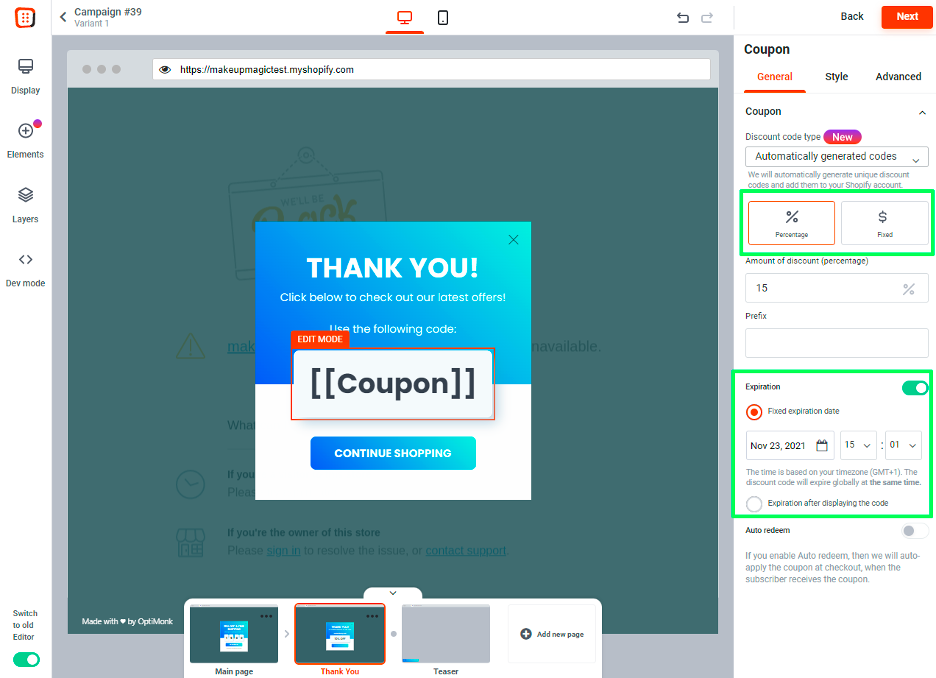- Blog
- Sales Promotion: Definition, Examples & Strategies to Drive Sales in 2025
Sales Promotion: Definition, Examples & Strategies to Drive Sales in 2025
-
Nikolett Lorincz
- Ecommerce
- 6 min read
Table of Contents
Feeling like your marketing efforts could use a little push to boost sales? You’re not alone.
Many brands have incredible products but still struggle to keep customers engaged and boost their conversion rates.
Here’s the thing: sometimes, people need a little nudge to hit that “buy now” button, and that’s exactly where sales promotions come into play.
They’re not just a way to “cut prices”—they’re a strategic method to win over customers, enhance customer engagement, make them feel valued, and turn one-time buyers into loyal fans.
In this article, we’ll break down what sales promotions are, why they’re essential, and how to leverage various sales promotion strategies to reach your goals.
Let’s jump in!
What are sales promotions?
Sales promotions are a marketing strategy used to spark interest, boost product demand, or encourage brand loyalty by offering discounts, special offers, or limited-time incentives.
These promotions go beyond traditional advertising by giving customers an extra reason to make a purchase, whether that’s through discounts, loyalty points, freebies, or contests.
Why are sales promotions important in marketing?
Sales promotions are crucial because they work as a motivator, giving customers an incentive to take action.
Unlike general brand advertising, sales promotions are more immediate and action-driven, often tied to specific objectives, such as driving sales during a slow period or clearing out end-of-season stock.
Implementing effective sales promotions and loyalty programs can help retain existing customers by encouraging repeat purchases and enhancing customer loyalty.
Not only do they help increase sales, but they can also elevate brand awareness, improve customer retention, and provide an edge over competitors.
Types of sales promotions
There’s no one-size-fits-all when it comes to sales promotion activities. Here’s a look at the most common types:
1. Discounts and coupons
Discounts and coupons are classic tools to attract price-sensitive customers. Whether you offer a flat percentage off or a special code, these promotions work well to entice new customers and reward your existing audience.
For example, a “10% off for first-time buyers” discount can make a big difference to hesitant customers.
2. Buy one, get one free (BOGO)
The BOGO deal is popular for a reason: it’s irresistible! The idea of getting more for the same price can be enough to sway customers to make a purchase.
This promotion type is particularly effective for products that customers tend to buy in pairs or multiples, like socks, beauty products, or snacks.

3. Free samples
Who doesn’t love a free sample? Offering samples lets customers try before they buy, which can be especially useful for new product launches.
This strategy is particularly powerful in beauty and food industries, where samples can help customers discover their new favorite products.
4. Loyalty programs
Loyalty programs reward repeat purchases and build a strong customer-brand relationship. From earning points on each purchase to unlocking exclusive discounts, loyalty programs are designed to keep customers coming back.
Take Starbucks Rewards, for example—it’s not just about coffee; it’s about gaining points and perks with each visit.

Recommended reading: 10+ Effective Loyalty Program Examples That Keep Customers Coming Back
5. Contests and giveaways
Contests and giveaways create excitement and buzz around your brand. They’re especially effective on social media, where they can drive engagement and expand your audience reach.
A well-timed giveaway can help introduce your brand to new customers while delighting your existing ones.

12 effective sales promotion strategies to drive more sales
Ready to take your sales promotions to the next level? Here are twelve tried-and-true sales promotion ideas and strategies to boost your sales.
1. Know your target audience
Tailoring sales promotions based on customer preferences and demographics is crucial.
For instance, younger audiences might respond well to social media-driven promotions, while older customers may appreciate loyalty programs or seasonal discounts.
2. Set clear goals and metrics
Identify specific, measurable goals before launching any sales promotion.
Are you aiming for more website traffic, higher conversion rates, or new customer acquisition? Set clear KPIs to measure success and ensure that your promotional efforts deliver real results.
3. Make your offer feel special
Special occasions make offers irresistible.
Even if it’s a made-up event (like “End of Summer Sale” or “Back-to-School Discount”), tying your sales promotion to a reason can make customers feel like they’re getting something exclusive.
It adds a sense of urgency and makes your promotion memorable.
4. Have a deadline
Deadlines are essential for driving urgency and the fear of missing out (FOMO). Time-bound offers push customers to act fast.
For example, a “48-hour flash sale” can help convert those who are on the fence about buying.
Here’s another example promoting a Halloween giveaway that ends on October 31st.

5. Add a countdown timer
If you want to boost short-term traffic and conversion rates, add a countdown timer to your website.
This technique creates scarcity, a powerful motivator that encourages shoppers to finalize their purchases on the spot.
The popup below is a great example of a limited-time offer:

6. Offer value-added services or products
Consider bundling products or offering free services, like a “buy shampoo, get a free conditioner” deal.
These value-added offers not only increase average order value but also help customers feel they’re getting more for their money.

7. Utilize cross-promotion and partnerships
Cross-promotions with complementary brands can help both parties expand their reach.
For example, a gym and a nutrition brand could collaborate on a joint promotion, creating exposure to new but relevant audiences for both.
Recommended reading: Cross-Promotion Examples from Leading Ecommerce Brands
8. Leverage social proof
Social proof in the form of reviews, testimonials, and user-generated content builds credibility and can increase the effectiveness of your promotions.
Highlighting satisfied customer reviews alongside your offers encourages new customers to trust your brand.
9. Use randomized coupon codes
Randomized coupon codes (like “AX6S7”) add exclusivity and urgency. They’re also great for tracking who redeems each offer, making it easier to follow up with customers who haven’t used their codes yet.
Here’s how you can set up automatically generated coupon codes with OptiMonk:

10. Offer discounts based on segments
Customize discounts based on visitor demographics or traffic sources.
For example, people who come through social media ads may need a slightly bigger discount than those arriving through direct search intent on Google.
11. Keep reminding users
Place a reminder of the discount in a visible spot on your website, like a sticky bar at the top.
Reminders throughout the shopping journey ensure that customers won’t forget about their discount when it’s time to check out.
12. Personalize promotions with data-driven insights
Personalized promotions, based on purchase history or browsing behavior, resonate more with customers.
For example, if a customer frequently buys skincare products, a personalized offer for a new face cream is likely to catch their attention.
3 successful sales promotion examples
Want to see these sales promotion tactics in action? Here are three inspiring sales promotion examples:
1. Mott & Bow

Mott & Bow offered a direct discount for first-time visitors through a fullscreen popup, targeting people who arrived via Facebook, Google Ads, or organic search. The clear, dollar-based offer hooked new visitors instantly, reducing purchase hesitation and boosting conversions.
Recommended reading: How Mott & Bow Achieved 100,000+ Subscribers & 10%+ Popup Conversion Rate
2. Nexus Sports Nutrition

This fun, interactive popup enticed visitors with an unexpected reward, creating excitement and encouraging conversions. The mystery discount created curiosity, which increased engagement and motivated users to stay on the site longer to find out their special deal.
Recommended reading: How a Mystery Discount Skyrocketed Nexus Nutrition’s Email Subscribers
3. Sassy Scents

Using a multi-step popup, Sassy Scents guided visitors through a yes-or-no question, requested their email address, and then revealed the 15% discount code. This layered approach was effective for lead generation while creating urgency with the “before it’s gone” phrasing, which drove immediate conversions.
Recommended reading: How Sassy Scents Boosted Conversions by 25% with a Simple Popup Strategy
5 common pitfalls to avoid when using sales promotion techniques
Even the best sales promotion techniques can backfire if you’re not careful. Here are a few common pitfalls:
1. Discount dependency
While discounts are effective in attracting attention, offering them too frequently can lead customers to expect perpetual savings, which ultimately hurts your profits.
If customers come to rely on discounts to make purchases, they may start to devalue your products or wait for the next sale rather than paying full price.
This can diminish your brand’s value over time and make it difficult to transition back to regular pricing.
Solution: Use discounts strategically. Reserve them for special occasions, holidays, or clearance events. Consider offering other types of promotions, like exclusive products or loyalty points, to keep customers engaged without relying on discounts alone.
2. Targeting the wrong audience
A well-crafted sales promotion will fail if it’s shown to the wrong people. Misaligned promotions—such as targeting high-end luxury buyers with a low-value discount—will likely fall flat.
Alternatively, if you’re promoting niche items to a broad audience, you may end up with little to no interest.
Solution: Analyze your audience segments and tailor each promotion accordingly. If you have different customer personas, create targeted offers based on demographics, purchase history, and customer behavior. Personalization increases relevance and makes each promotion more likely to succeed.
3. Not measuring results
Launching a promotion without tracking key metrics is like navigating without a map. If you don’t measure the effectiveness of your promotion, you can’t know which tactics to repeat, improve, or discard.
Without tracking, you miss out on valuable insights that could inform future promotions.
Solution: Set clear goals and identify the metrics you’ll track before launching each promotion. Metrics could include sales conversion rates, customer acquisition, average order value, and return on ad spend (ROAS). Use analytics tools to gather data and measure your success, and adjust your approach based on the results.
4. Ignoring brand perception
Sales promotions should support and align with your brand identity, not dilute it. Overly aggressive or out-of-character promotions can confuse or even repel your core audience.
For example, a luxury brand that suddenly starts using flash sales or steep discounts may erode its prestige and risk losing loyal customers who value exclusivity.
Solution: Ensure that all promotions reflect your brand’s values, tone, and market positioning. Promotions can be exciting and creative, but they should always feel authentic to your brand. If your brand is known for quality and exclusivity, consider using limited-edition products, early access sales, or personalized offers instead of drastic discounts.
5. Ignoring long-term effects
Some promotions can have unintended long-term consequences.
For instance, an aggressive discount campaign might create a spike in short-term sales but reduce perceived product value in the long run.
Additionally, frequent promotions may attract one-time bargain hunters rather than loyal, repeat customers.
Solution: Balance short-term promotional goals with long-term brand-building strategies. Focus on customer loyalty and retention, offering value in ways that go beyond discounts. Consider how each promotion will impact your brand’s reputation and customer expectations over time.
Wrapping up
Sales promotions are powerful tools that can boost brand awareness, increase sales, and build customer loyalty—when done right.
With clear objectives, thoughtful planning, and the right mix of urgency and creativity, you can craft sales promotions that your target audience can’t resist.
Remember, it’s not about slashing prices but creating value and excitement that keeps customers coming back. So start planning your next sales promotion and get ready to watch those sales soar!
Migration has never been easier
We made switching a no-brainer with our free, white-glove onboarding service so you can get started in the blink of an eye.

What should you do next?
Thanks for reading till the end. Here are 4 ways we can help you grow your business:
Boost conversions with proven use cases
Explore our Use Case Library, filled with actionable personalization examples and step-by-step guides to unlock your website's full potential. Check out Use Case Library
Create a free OptiMonk account
Create a free OptiMonk account and easily get started with popups and conversion rate optimization. Get OptiMonk free
Get advice from a CRO expert
Schedule a personalized discovery call with one of our experts to explore how OptiMonk can help you grow your business. Book a demo
Join our weekly newsletter
Real CRO insights & marketing tips. No fluff. Straight to your inbox. Subscribe now
Nikolett Lorincz
- Posted in
- Ecommerce
Partner with us
- © OptiMonk. All rights reserved!
- Terms of Use
- Privacy Policy
- Cookie Policy
Product updates: January Release 2025








